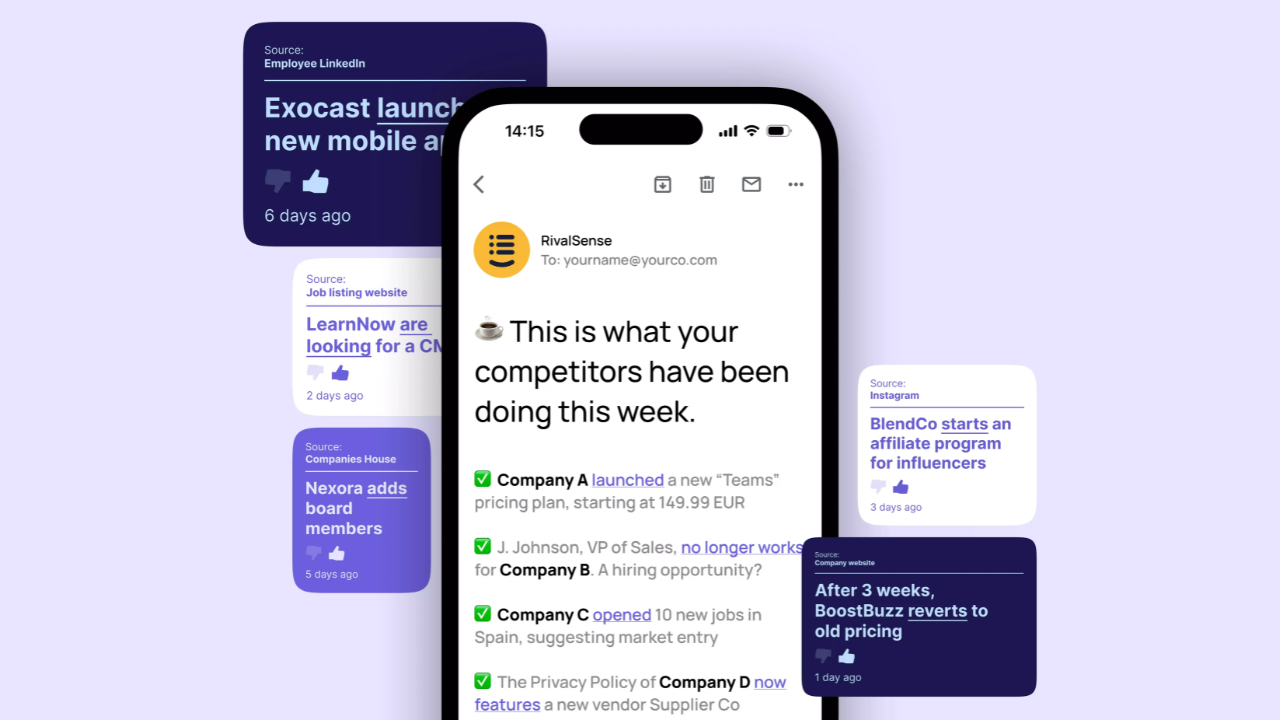4 Myths of Competitive Intelligence

In today's fast-paced business world, staying ahead of the competition is more important than ever. Yet, despite its crucial role, competitive intelligence is often misunderstood. In this article, we're going to bust four common myths about competitive intelligence, shedding light on what it really is and how it can help your business decisions. Let's clear up the confusion and show you how getting the right insights on your competitors can give you that much-needed edge in the market.
Myth 1: Competitive Intelligence is for Large Companies Only
One of the most common myths about Competitive Intelligence (CI) is that it is reserved exclusively for large enterprises and corporations. This myth stems from the assumption that to carry out CI, you need a dedicated team and sophisticated technology that often is not feasible for smaller companies. And that was true, until a few years ago.
The reality now, however, is that competitive intel is just as crucial (or probably even more so) for small and medium enterprises as well as startups. In fact, the benefit of knowing the ins and outs of your competitors is much larger for small companies than it is for corporations. This is because large companies typically move slowly and events such as market entries, pricing changes, or conference participation are easy to predict and follow. For SMEs with multiple competitors, however, such changes can be easily missed if the right CI tools are not employed.
Myth 2: Competitive Intelligence is Reserved Only for Sales Teams
Now that you know that CI can be used within SMEs, you might still think that competitive intel is only useful for sales teams. And again, yes, sales teams love it when they get fresh intel that can help them increase their commissions. But it is not reserved only for sales teams. Here are some ways how CI can help other departments.
Marketing Team
- Content Marketing: Identify trending topics and content strategies used by competitors to refine your own content marketing efforts
- Media Mentions: Track how and where competitors are mentioned in media to better understand their public perception and adjust your PR strategies accordingly
Sales Team
- Product Offering: Tailor sales pitches by understanding competitors' product features and new offerings
- Partnerships, Clients: Be on top of who are your competitors’ clients and partners to identify useful sales signals and identify the right buyer personas
Human Resources Team
- Hiring: Enhance your recruitment strategies by monitoring competitors’ hiring trends and job postings
- Layoffs: Identify potential talent pools from the employees that have left your competitor
Finance Team
- Fundraising: Engage in financial planning by keeping an eye on competitors' fundraising activities
- M&A: Evaluate market consolidation risks and opportunities through competitors' mergers and acquisitions
- Corporate Fillings: Be the first to know when your competitor has published new financial or sustainability reports
Myth 3: Competitive Intelligence is Shady
You’ve probably seen a lot of movies where competitive intelligence means sneaking into the competitor’s skyscraper office, plugging a USB into CEO’s laptop, hacking a password, and jumping out of the window with a parachute just before the guard comes in.
I’m sorry to say that real life is much more boring. All of the data about your competitors is sourced from public sources. You would be surprised how much competitive intel can be gathered from social media alone these days. RivalSense, for example, uses more than 80 public data sources to gather data and turn it into crisp weekly insights.

Myth 4: Competitive Intelligence is Cool, but Useless
To be honest, this can be true. There are loads of companies out there that tell you stuff like “Jane Doe, VP Product at Foogle, created a new post on LinkedIn”. Nice. Now what?
On the other hand, there are also a few CI tools that synthesize those posts into very specific insights that really help you in your business activities. In those cases, the ROI of your CI stack will definitely be positive.
It is your job to find such a tool.
